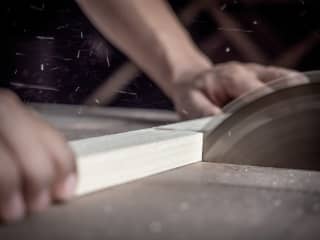Essential Woodworking Techniques for Strong and Beautiful Projects
Mastering the Art of Joints
Introduction
The success of any woodworking project hinges on the strength and stability of its joints. Whether you’re crafting a sturdy table, an elegant jewelry box, or a whimsical birdhouse, mastering essential joint techniques is fundamental.
This blog post dives into the world of woodworking joints, equipping you with the knowledge and skills to build projects that are both functional and visually appealing.
This web page contains affiliate links. When you click on a link on this page and make a purchase, I may earn a small commission, at no additional cost to you. Thank you for your support.
Building with Strength and Style
Choosing the Perfect Wood Joint
The key to creating sturdy and beautiful wooden structures lies in the joints. These clever connections hold your pieces together, but the right choice goes beyond just strength.
Consider the weight your project will bear and the look you’re aiming for. With the right joint, your creation will be both functional and aesthetically pleasing.

Common Woodworking Joints
Butt Joint
This is the simplest joint, where two flat pieces of wood are connected directly at their ends. It’s a good option for beginner projects or parts that don’t bear much weight. However, butt joints on their own are weak and tend to pull apart, so they often require additional reinforcement with glue, dowels, or strategically placed screws.
Dowel Joint
Dowel joints offer increased strength by using wooden dowels (cylindrical rods) inserted into pre-drilled holes that align the pieces and prevent them from shifting. This creates a stronger and more secure connection compared to a basic butt joint. Dowel joints are a versatile choice for furniture building, cabinetry, and other projects requiring moderate strength.
Dado Joint
This joint creates a groove (dado) on one piece of wood that a corresponding piece with a flat edge fits into. Dado joints provide a strong and concealed connection, often used in shelving, cabinetry, and applications where you want a clean and seamless look.
Miter Joint
As the name suggests, this joint connects two pieces of wood at an angle, typically 45 degrees to create a corner. Miter joints are commonly used for building picture frames, boxes, and decorative trim. However, they can be tricky to achieve a perfect fit and require good cutting accuracy for a clean look.
Lap Joint
A simple and strong joint where two pieces of wood overlap each other by a specific distance. Lap joints are a good choice for applications where the joint won’t be visible from the outside, like reinforcing corners of a cabinet or creating a sturdy base for a project.
Half-Lap Joint
Similar to the lap joint but with only half the thickness of the wood overlapping on each piece. This creates a cleaner appearance where the joint might be slightly visible, but sacrifices some strength compared to a full lap joint.
Mortise and Tenon Joint
A classic and highly revered joint type for its strength and durability. It features a protruding “tenon” (rectangular protrusion) on the end of one piece that fits snugly into a corresponding mortise (cavity) carved into the other piece. This joint is often used in furniture building, cabinetry, and applications requiring long-lasting and secure connections.
Explanation and Benefits for Each Joint
Butt Joint: Easy to create but requires additional reinforcement for strength. Good for beginner projects or low-stress applications.
Dowel Joint: Stronger than butt joints, versatile for various projects. Offers good alignment and easy assembly.
Dado Joint: Concealed and very strong, ideal for shelving and cabinetry. Provides a clean and finished look.
Miter Joint: Creates beautiful angled corners, commonly used for picture frames and trim work. Requires precise cutting for a perfect fit.
Lap Joint: Strong and simple, good for hidden joints or reinforcing corners. Easy to create for beginners.
Half-Lap Joint: Stronger than a butt joint but less bulky than a full lap joint. Offers a moderately attractive exposed joint.
Mortise and Tenon Joint: Extremely strong and durable, ideal for long-lasting furniture and cabinetry. Requires more woodworking skill to create accurately.
Tips for Creating Strong Joints
Use High-Quality Lumber: Sturdy and warp-resistant wood ensures better joint integrity.
Precise Cutting Techniques: Accurate cuts are essential for proper joint assembly. Invest in a good miter saw and sharpen tools regularly.
Clamps and Jigs: Clamps apply pressure to hold pieces together for secure gluing. Jigs can help ensure the accuracy, consistency, and safety of your woodworking projects.
Always follow the proper safety procedures.
